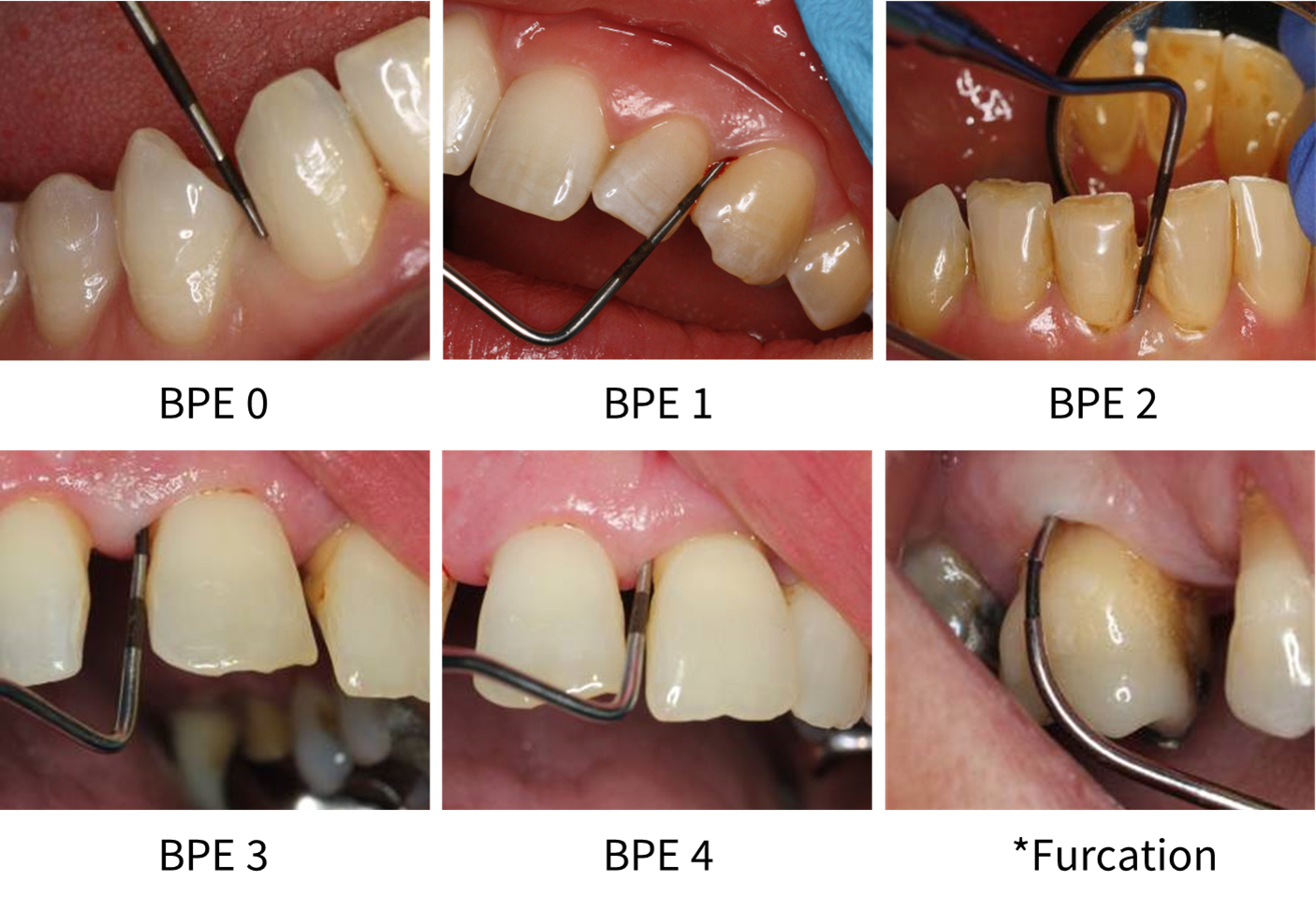BPE screening of adults
BPE screening of adults
Carry out a BPE screen for all new adult patients, and all adult patients without a diagnosis of periodontitis at each recall appointment. For patients with a diagnosis of periodontitis, see Full periodontal examination.
Explain to the patient the reason for the examination.
Divide the dentition into 6 sextants (i.e. 17-14, 13-23, 24-27, 47-44, 43-33, 34-37).
Examine all teeth in each sextant (excluding third molars unless first and/or second molars are missing) using a WHO BPE probe (see figure: WHO BPE probe) and light probing force equivalent to the force required to blanch a fingernail (see figure: Probing force).
- ‘Walk’ the probe around the gingival margin of each tooth in the sextant (see figure: Walking the probe).
N.B. A sextant must include at least two teeth; if only one is present then include it with the neighbouring sextant.
Record the highest score for each sextant, including any furcation involvement (noted as * beside the sextant score), as illustrated in table BPE Scoring codes.
- For example, a sextant where the black band enters the pocket but is still partially visible plus furcation involvement would be scored 3*.
- If any tooth in a sextant is given the score 4, continue to examine all sites in the sextant. This will help to gain a fuller understanding of the periodontal condition and will make sure that furcation involvements are not missed.
For patients with a BPE score of 3, 4 or * carry out a full periodontal examination and record the findings in the patient’s clinical notes.
- For patients with a BPE score of 3, full charting of the affected sextant should be carried out after initial treatment.
- For patients with a BPE score of 4, full charting of the whole dentition should be performed before treatment begins.
BPE Scoring codes
|
Probing depth |
Observation |
BPE Score |
|
Black band |
No probing depths >3.5 mm, no calculus/overhangs, no bleeding after probing, no plaque present |
0 |
|
Black band |
No probing depths >3.5 mm, no calculus/overhangs, but bleeding after probing |
1 |
|
Black band |
No probing depths >3.5 mm, but supra- or subgingival calculus/overhangs present |
2 |
|
Black band |
Probing depth(s) of at least 4 mm present |
3 |
|
Black band |
Probing depth(s) of at least 6 mm present |
4 |
|
N/A |
Furcation involvement |
* |
Probing depths

Note that, while furcation involvement was identified with a BPE probe, the image shows the degree of furcation involvement being assessed with a Nabers probe.
The score for each sextant is recorded in a 2 x 3 box chart, with any missing sextant denoted by an X, as shown in figure: Adult box chart.

Box chart with charting of adult BPE scores